Three Cross-fit Movements Every Firefighter Should Be Doing – Part 1
The job requirements of a firefighter are constantly varied, functional movements, performed at a high intensity.
That is also the definition of cross-fit.
But let’s look at this through the eyes of the job itself. Some of the most intense work we do as firefighters is at a working structure fire. We go to the scene wearing between 50-75 pounds of gear. When we add up our bunker gear (pants, jacket, helmet, boots, gloves and any tools), our SCBA and any additional tools we may carry in our hands, we quickly can get that number to top 75 pounds. Add to that the weight of any absorbed water and/or sweat into our gear and that number continues to climb.
Another factor is stress. There are many different stressors on a fire ground – working in zero visibility, high heat environments, with the stress of trapped occupants – the list can go on and on.
So what can we do to prepare ourselves physically?
The simple answer is to work out. While any kind of working out is certainly a benefit, doing the proper workout that specifically trains us for the demands of the fire ground is critical. We can have all the strength in the world, but if your endurance is lacking, you will quickly become ineffective.
On the other hand, if our endurance is off the charts but being able to advance a charged hose line is beyond our strength capacity, again, we will be rendered ineffective.
So what is the answer?
We need to have a workout that is designed with the goal of strength endurance as its end-game. There is not “one workout that fits all” solution. But there are certainly some cross-fit type exercise/movements that we should all incorporate in our workouts. They should address both the strength and endurance demands of any fire ground.
In Part 1 of this three part series we will discuss deadlifts and how these exercises incorporate all muscles in the body, just like how we incorporate all our muscles on a working incident.
Deadlifts
There is no better exercise for building overall body strength. There is not a more performed movement, not only on the fire ground, but also in life than picking something up off of the ground. From lifting a patient on a cot, to moving the power plant for a set of extrication tools, deadlifting is done repeatedly throughout any given day.
This exercise incorporates the hamstrings, glutes, lower back, upper back, core (abdominals) and arms (both biceps and triceps). There is not a better exercise for your back when done properly. There is also not a worse exercise for your back when done improperly. Here are some points that will help you master this exercise. Remember to always start off with light weight when learning any exercise.
- Your toes should be pointed slightly outward.
2.Your feet should be at shoulder width.
3.Place your feet under the bar so that when you are looking down, the bar is positioned in the center of your foot.
4. You can use either an overhand grip or an alternating grip.
5. Your hips should be slightly lower than your shoulders and your back should be straight. (Never let your back become rounded, ever!)
6. Tighten your core and your back just to the point that the bar is almost coming off of the ground.
7. With your hips and shoulders beginning to move at the same time, begin to straighten out your body until you are in an upright position.
8. Keep your bar and its path as close to your body as possible for the entire lift. It should hug your shins, then round the knees, then slide up your quads.9. Lower the bar slowly, your shoulders and hips moving in unison. Again, the bar should slide down your quads, round the knees and hug your shins. Never, ever let your back become rounded.
A video demonstration can be found at https://www.youtube.com/watch?v=KoH_klnwdr0
Join us next time in Part 2 of our series when we discuss the second of the three cross-fit movements every firefighter should do, the thruster. Until then stay safe and fit!
(Part 1 of 3)
Photographer: Glen E. Ellman www.fortworthfire.netPhoto subject: Lt. Jake Henderson

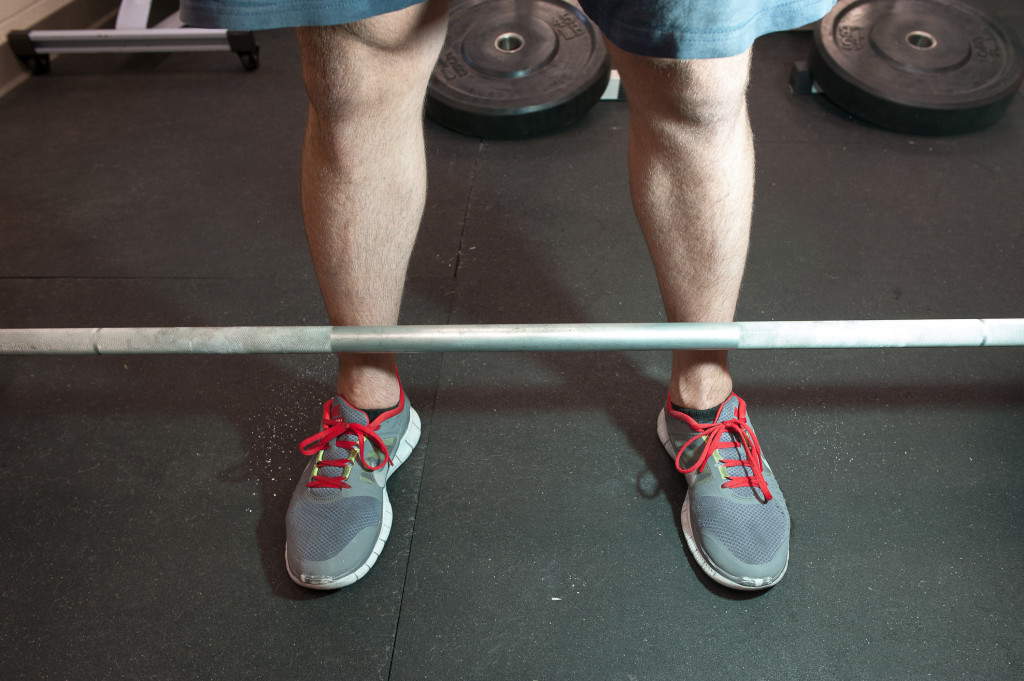
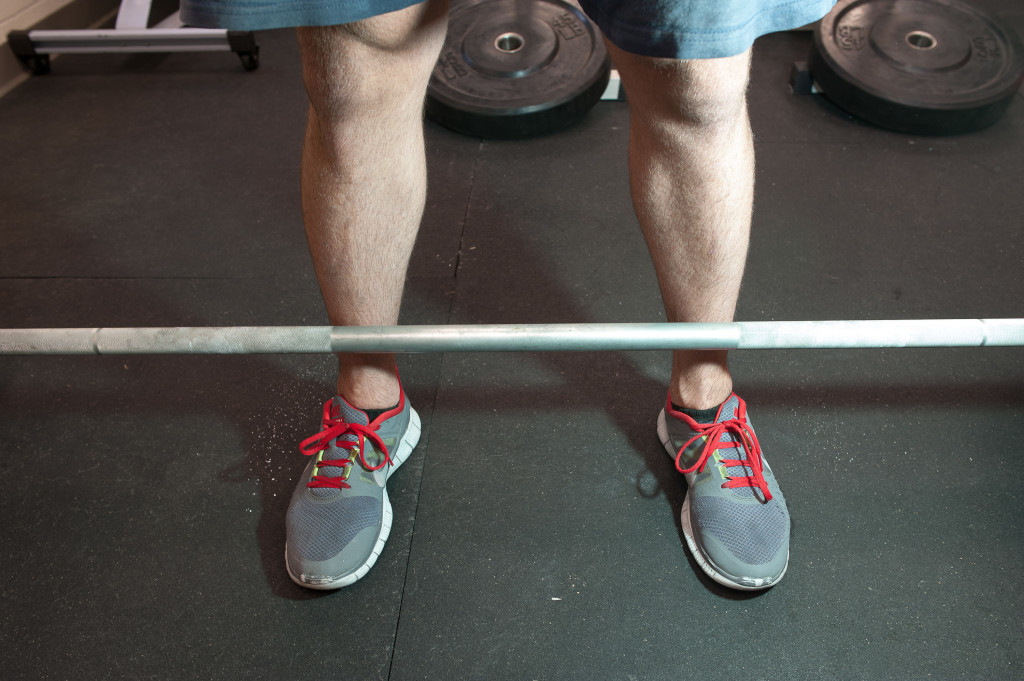
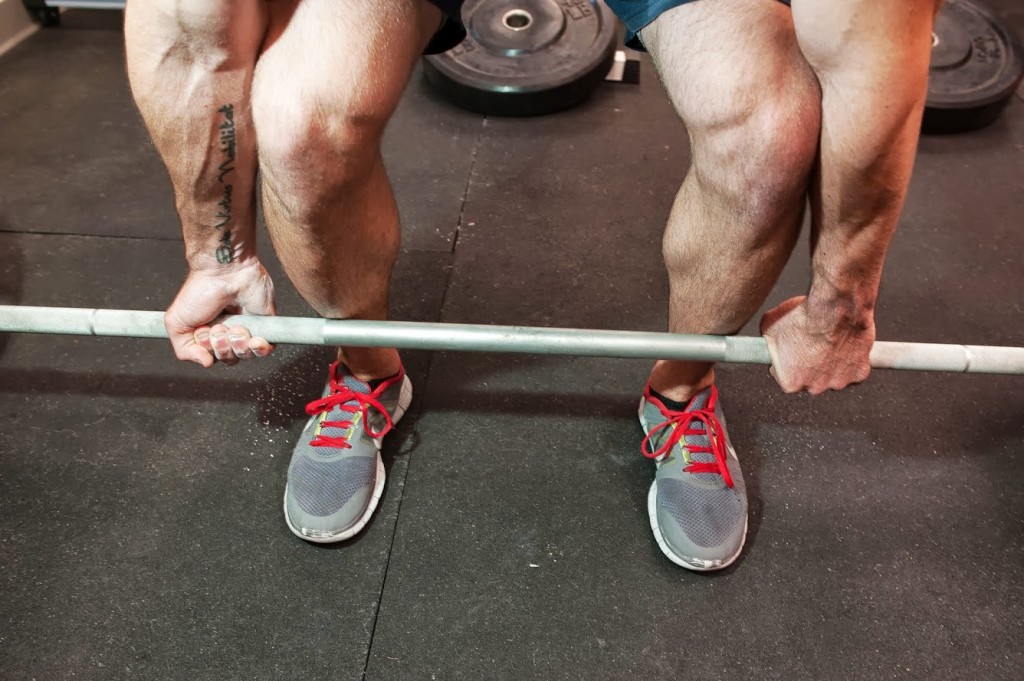
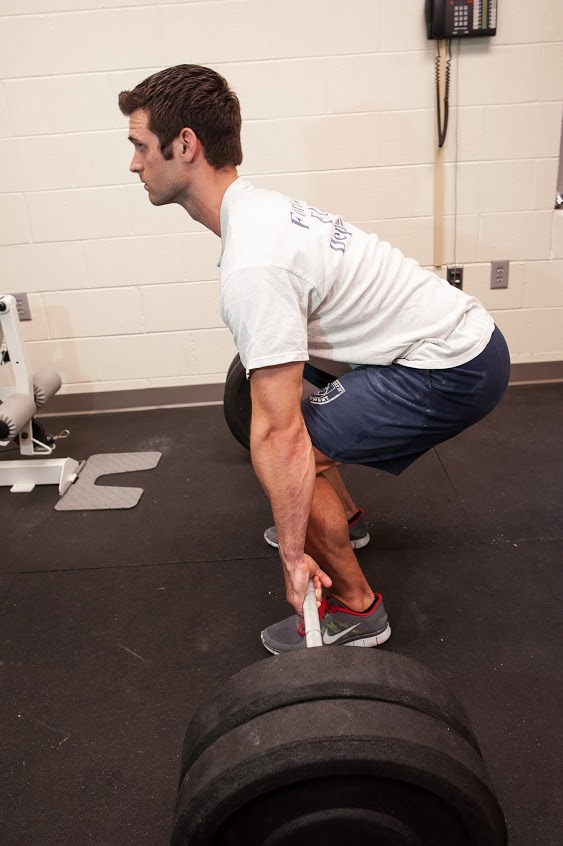
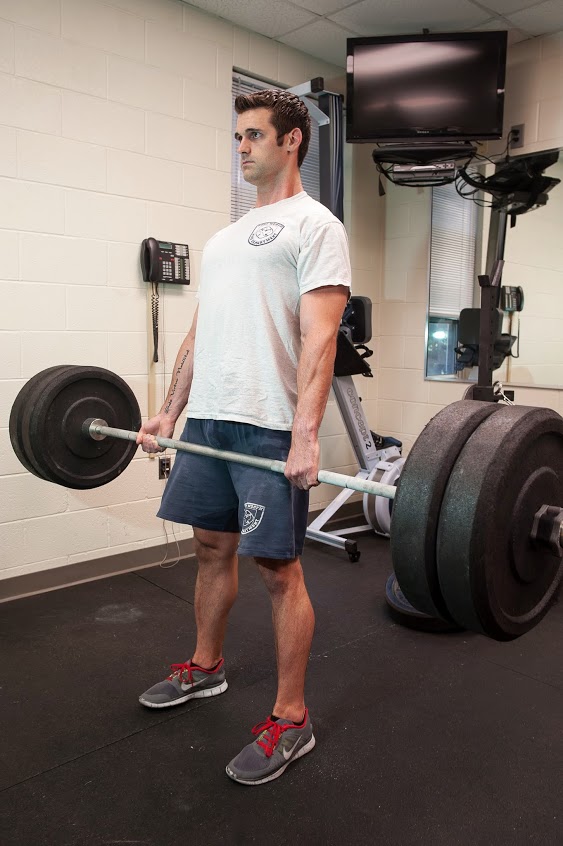
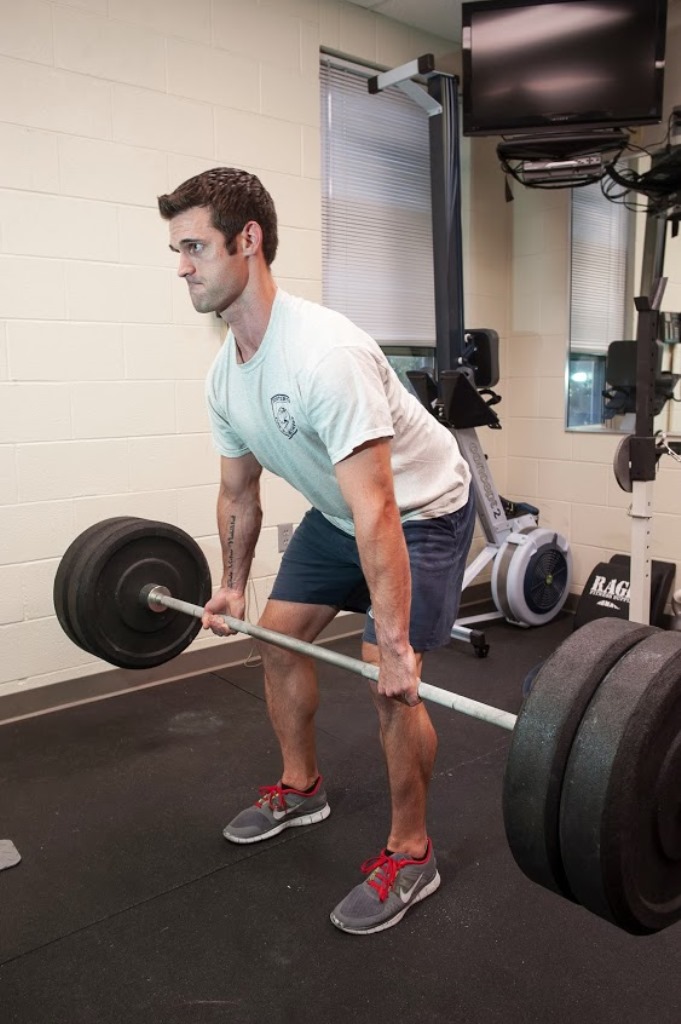
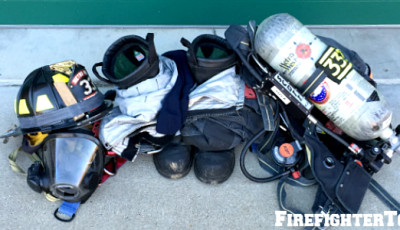







Since when is the dead lift a “crossfit move”? This is simply an Olympic lift.
I agree completely that it is an oly lift. But it is used all the time in Crossfit. I could have easily renamed the article for it to fit but it would just be splitting hairs. I love the deadlift as the foundation to any type of strength programming. It was either that or the back squat and you will see with the next part why I chose the deadlift over the back squat. And believe me that was difficult because back squats are by far and away my favorite exercise/movement to do.
To split hairs further, the deadlift is a powerlift. However, it is the foundation to both olympic lifts; the snatch and the clean and jerk. Further, the author is correct, the dradlift is a foundational movement of the human body when moving a load, the other movement is the squat. I would venture a guess that an upcoming part of this series addresses the squat.
Since when is a Deadlift a Olympic move? no Olympic lifter does Deadlifts. Its a Power move.
Pingback: Top 5 Firefighter Fitness / Health And Wellness Articles For 2013 | FireFighterToolBox
It’s my understanding that lowering the bar slowly puts the back under unnecessary tension, while doing little for muscle growth or endurance. The most agreed upon form is to either do a controlled drop or let go of the bar entirely. Never pull weight as you drop.
Last fire I was at I found myself in the bathroom and stepped on the scale just for the hell of it and was hauling 110lb. over my normal weight. Good article. Look forward to the next installment.